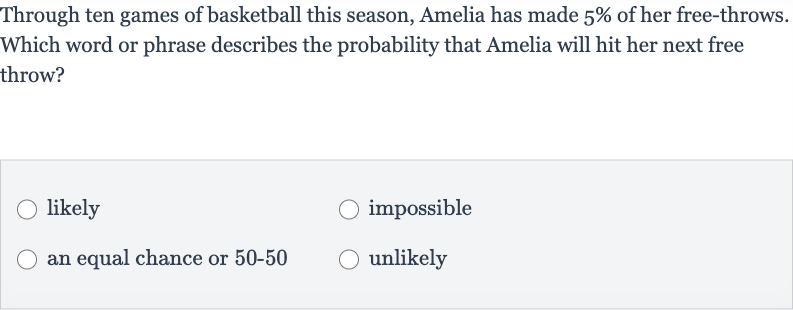AI tutor
Welcome to Bytelearn!
Let’s check out your problem:

Through ten games of basketball this season, Amelia has made of her free-throws. Which word or phrase describes the probability that Amelia will hit her next free throw?likelyimpossiblean equal chance or unlikely
Full solution
Q. Through ten games of basketball this season, Amelia has made of her free-throws. Which word or phrase describes the probability that Amelia will hit her next free throw?likelyimpossiblean equal chance or unlikely
- Amelia's Success Rate: Amelia has made of her free-throws through ten games. To understand what this means for the probability of her making the next free throw, we need to consider what a success rate indicates.
- Interpreting Success Rate: A success rate means that out of every free throws, Amelia is expected to make . This is a very low success rate.
- Probability Calculation: In terms of probability, if Amelia has a success rate, the probability of her making any given free throw is (which is when converted to a decimal).
- Likelihood of Next Free Throw: Based on this probability, we can describe the likelihood of Amelia making her next free throw. The options are: likely, impossible, an equal chance or -, and unlikely.
- Conclusion: Since a success rate is quite low, it is not "likely" nor is it "impossible" as she has made some shots. It is also not "an equal chance or -" because that would imply a success rate of . Therefore, the correct description of the probability that Amelia will hit her next free throw is "unlikely".
More problems from Find probabilities using the binomial distribution
QuestionGet tutor help
QuestionGet tutor help
QuestionGet tutor help
QuestionGet tutor help
QuestionGet tutor help
QuestionGet tutor help
QuestionGet tutor help
QuestionGet tutor help
QuestionGet tutor help
QuestionGet tutor help
